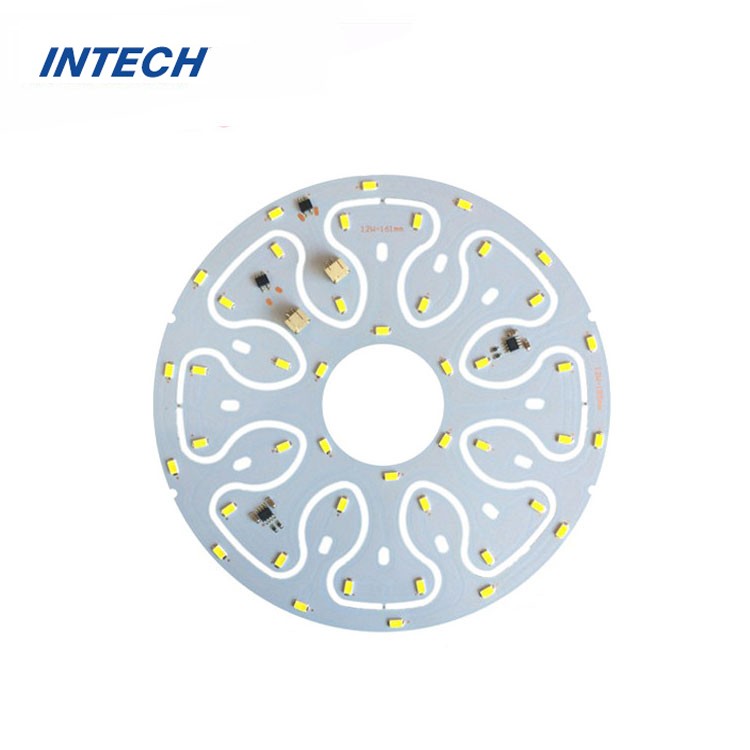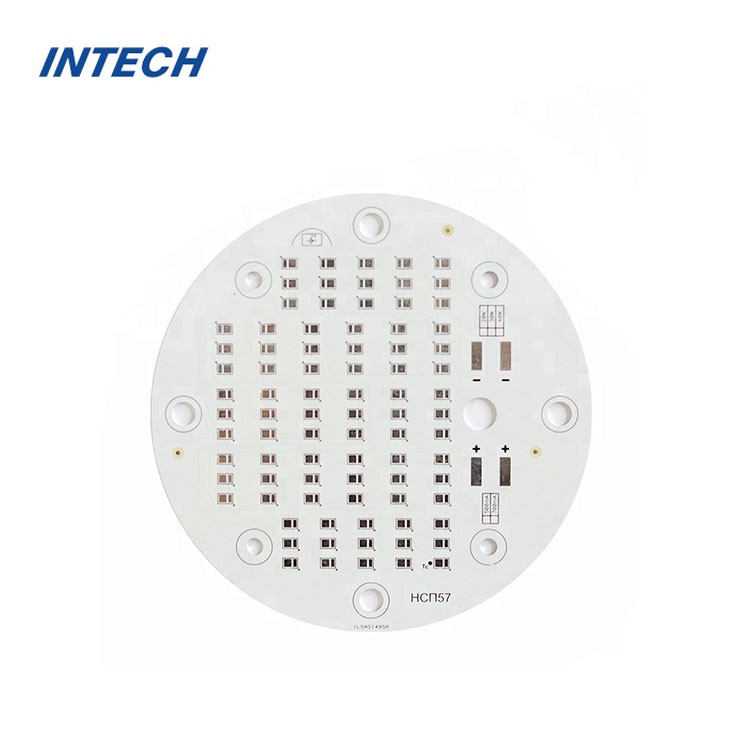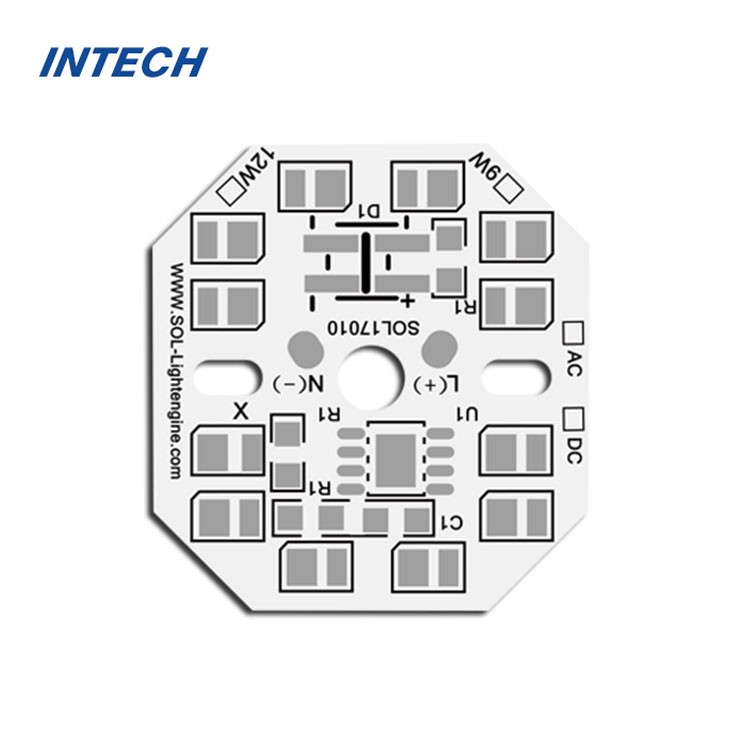Why Choose Aluminum PCB Over Traditional FR4 PCBs?
Date:2025-02-14 16:35:17
When it comes to designing and manufacturing printed circuit boards (PCBs), choosing the right material is crucial to the performance, reliability, and cost-effectiveness of the final product. Intech, a leading aluminum PCB manufacturer, offers innovative solutions for industries requiring advanced thermal management and durability. Among the most debated choices in PCB material selection is the comparison between aluminum PCBs and traditional FR4 PCBs. In this article, we will explore why aluminum PCBs are often a superior choice over their FR4 counterparts, considering factors like heat dissipation, durability, and cost.
Aluminum PCB vs. FR4: A Comparative Overview
FR4 is the most commonly used material for PCBs, made from woven fiberglass cloth with an epoxy resin binder. It’s widely utilized due to its low cost, electrical insulation properties, and ease of fabrication. However, FR4 has limitations in terms of heat management and thermal performance, especially when used in high-power or heat-sensitive applications.Aluminum PCBs, on the other hand, are designed with a metal base (usually aluminum) that allows for significantly better heat dissipation. The metal core helps transfer heat away from the components, reducing the risk of overheating and ensuring the PCB’s performance remains optimal over time. For applications like LED lighting, power electronics, and automotive systems, where heat management is a critical concern, aluminum PCBs provide superior performance compared to FR4 PCBs.

Key Advantages of Aluminum PCBs Over FR4
1. Superior Heat Dissipation
One of the most significant benefits of aluminum PCBs is their exceptional ability to manage heat. Components like LEDs or high-power circuits generate significant heat, which can degrade performance and reliability. Aluminum PCBs help to dissipate this heat more efficiently, reducing the risk of thermal damage. Unlike FR4 PCBs, which are typically limited by their insulating properties, aluminum PCBs provide a much better path for heat flow, keeping components cooler and enhancing the overall lifespan of the product.
2. Enhanced Durability
In high-performance environments, durability is key. Aluminum PCBs are more resistant to mechanical stress compared to FR4 PCBs. The aluminum substrate provides added strength, which is beneficial for applications that require more robust components. For example, in automotive electronics or industrial machinery, aluminum PCBs offer greater reliability under demanding conditions.
3. Reduced PCB Size
Aluminum PCBs allow for better heat dissipation in smaller spaces, enabling designers to create more compact and efficient products. This is particularly advantageous in industries like LED lighting or power supplies, where space is often limited but high thermal performance is still required. The ability to achieve efficient thermal management in a smaller form factor is something FR4 PCBs struggle with due to their poorer heat conductivity.
4. Improved Electrical Performance
Aluminum substrates not only enhance thermal performance but also contribute to improved electrical performance. The metal base of the aluminum PCB helps to reduce signal interference, providing a stable platform for high-frequency applications. This makes aluminum PCBs ideal for applications where signal integrity and high-frequency performance are crucial, such as RF circuits and communication devices.

Aluminum PCB Cost vs. FR4 PCB Cost
While aluminum PCBs offer superior performance, they come at a higher upfront cost compared to FR4 PCBs. The material and manufacturing processes involved in creating aluminum PCBs typically make them more expensive. However, the higher cost of aluminum PCBs is often justified by their enhanced heat dissipation, durability, and longevity, especially in high-power or heat-sensitive applications.For manufacturers, the aluminum PCB cost is an investment that can pay off in the long run, as it helps reduce the risk of failures due to overheating and enhances the overall reliability of the final product. On the other hand, FR4 PCBs are cost-effective and ideal for applications with less stringent thermal requirements. For example, in low-power devices or applications where heat is not a significant issue, FR4 may be the more budget-friendly option.

When to Choose Aluminum PCBs
If your application involves high-power components, significant heat generation, or requires a smaller form factor with enhanced durability, aluminum PCBs are the right choice. They are particularly well-suited for:
LED lighting and smart lighting solutions
Power electronics (e.g., power supplies, converters)
Automotive electronics and systems
Industrial machinery and robotics
Telecommunications and RF circuits
On the other hand, if your project has limited power consumption, lower thermal demands, and cost is a significant factor, FR4 PCBs might be sufficient.
Choosing between aluminum PCBs and FR4 PCBs depends largely on the specific needs of your application. For high-performance, heat-sensitive products, aluminum PCBs provide unmatched heat dissipation, durability, and reliability, making them a smart choice for demanding environments. As a trusted aluminum PCB manufacturer, Intech specializes in creating high-quality aluminum PCBs that meet the most stringent requirements, ensuring your products perform at their best. While aluminum PCB cost is higher, the benefits far outweigh the initial investment in many high-power, heat-sensitive applications.Understanding the strengths and limitations of both materials allows manufacturers to make an informed decision, ensuring the right PCB is selected for the right application. Whether you’re working on LED systems, power electronics, or other advanced applications, aluminum PCBs offer the thermal performance and durability needed to elevate your designs.
